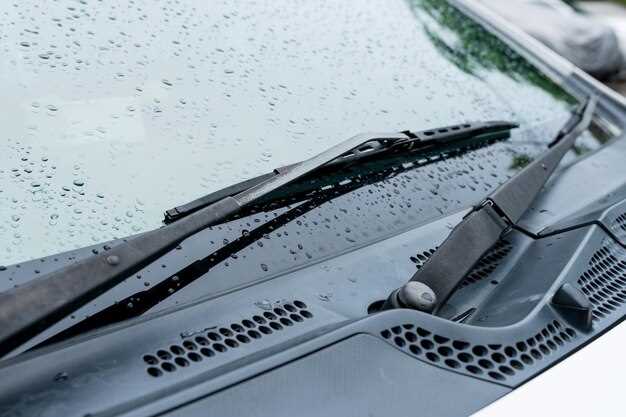
How often to replace windshield wipers

Windshield wipers are essential for maintaining a clear view while driving, especially during adverse weather conditions. Regular use of wiper blades exposes them to wear and tear, which can significantly affect their performance over time. It is crucial for every driver to understand the signs of wiper degradation and know how often to replace them to ensure maximum safety on the road.
Experts recommend replacing windshield wiper blades every six to twelve months, depending on various factors such as climate, usage, and the quality of the blades themselves. In regions with heavy rainfall or snow, wipers may wear out more quickly, necessitating more frequent replacements. On the other hand, drivers in milder climates might find that their blades last longer.
Recognizing when to change your wiper blades can save you from unsafe driving conditions. Deteriorating wipers can lead to streaks on your windshield, a chattering sound during operation, or even complete failure to clear rain or snow. These issues can obstruct your view and increase the risk of accidents, making it vital to keep a close eye on the condition of your wiper blades.
Signs That Indicate Wiper Blade Replacement

It is essential to keep your windshield wipers in optimal condition for maintaining a clear view during inclement weather. There are several signs that can signal the need for replacement. One of the most noticeable signs is the presence of streaks on the windshield. When wipers fail to clear water effectively, they can leave behind streaks, obstructing your view.
Another indication is a squeaking or chattering noise as the wipers move across the glass. This sound often results from worn-out rubber that no longer glides smoothly, impacting the wiper’s efficiency. Additionally, if you notice that the wiper blades have become cracked or warped, it is time for a replacement. Damaged blades can lead to uneven wiping, failing to provide a clear view.
Pay attention to how well the wipers handle heavy rainfall. If they struggle to keep the windshield clear under such conditions, it’s a clear sign that they require replacement. Regular inspections of the wiper blades, especially before seasonal changes, can help ensure that they remain effective in providing a clear view during adverse weather.
Recommended Replacement Frequency Based on Climate
Windshield wipers play a crucial role in maintaining a clear view while driving. The frequency of replacing wiper blades largely depends on the climate you encounter throughout the year.
In wet climates, where rain is common, it’s recommended to replace your wiper blades every 6 to 12 months. The constant exposure to moisture can lead to faster wear and tear, affecting how well the blades wipe the windshield.
In dry, arid regions, wiper blades may last longer, typically between 12 to 24 months. However, the intense sun and heat can cause rubber components to deteriorate, making regular checks necessary to ensure they remain effective in providing a clear view.
In snowy or icy conditions, consider changing your blades every 6 to 12 months as well. The freeze and thaw cycle can cause damage to the rubber, leading to reduced performance during critical driving conditions.
Regularly inspecting your wiper blades for signs of wear, such as cracks or splitting, is vital. Even if you are within the recommended replacement frequency, ensure that the blades maintain their ability to clear the windshield effectively, providing you with the safety and visibility you need while driving.
Tips for Choosing the Right Wiper Blades for Your Vehicle

Selecting the appropriate wiper blades is crucial for maintaining a clear view while driving. Here are some important factors to consider when choosing wiper blades for your vehicle:
- Size Compatibility: Always refer to your vehicle’s owner manual or check with the manufacturer to determine the correct size of wiper blades. Incorrect sizes can cause poor performance and visibility.
- Type of Blades: There are several types of wiper blades available:
- Conventional Blades: These have a metal framework and are typically less expensive. However, they may not perform as well in extreme weather conditions.
- Beam Blades: These offer a sleek design and superior performance, especially during heavy rain or snow. They conform better to the windshield, ensuring a clear surface.
- Hybrid Blades: These combine features from both conventional and beam blades, providing excellent performance in various weather conditions.
- Material Quality: Look for blades made from high-quality rubber or silicone, which provide better durability and performance in adverse weather conditions. Premium materials also help maintain a clear view by reducing streaking.
- Climate Consideration: Consider the typical weather conditions where you drive. If you frequently encounter heavy rain, snow, or ice, choose blades designed for these conditions to ensure maximum visibility.
- Easy Installation: Opt for wiper blades that are easy to install. Some come with quick-attach systems, making the replacement process smoother without the need for additional tools.
By considering these factors, you can select the right wiper blades that enhance your safety and ensure a clear view while driving.